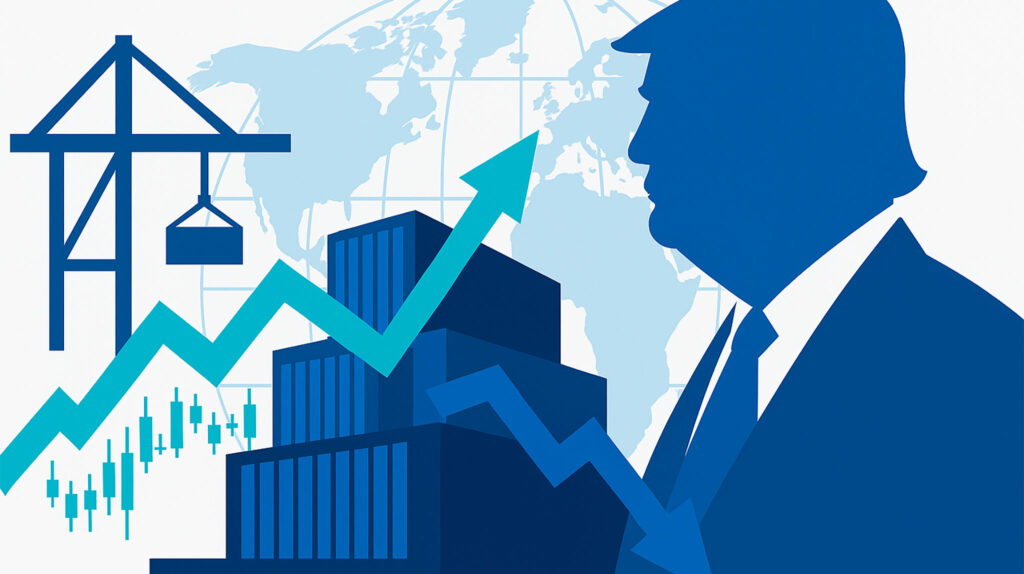It is often said that trend followers provide “crisis alpha.” This means that market stress often benefits their strategies. This follows logically as moves get larger, coordinate together, and run consistently, trading becomes easier. These managers quickly caution that they do not always provide this negative correlation. Price action can swing unpredictably against long-standing trends as well. This month is shaping up to be one of those months. While frustrating, the same rules produced solid gains in 2024 and may do so again in 2025. Volatility often breeds opportunity, and we have it in spades.
Unpredictability and Systematic Trading
The key to systematic trading is predictability. All CTAs look at an instrument’s patterns, price history, and momentum to determine direction. Few can predict Donald Trump. On April 2, 2025, he announced “Liberation Day,” which put a 10% tariff on all imported goods and additional levies on specific countries. As details of the plan became clear, we saw massive moves up and down, many of which were against the current trends. We detail a few of them below.
Impact on Equity Markets
Equity markets re-priced with slower growth expectations and unclear earnings projections given the reliance of many companies on foreign suppliers. Additionally, widespread backlash from Europe, Asia, and even North American neighbors dampened demand for American products.
S&P 500
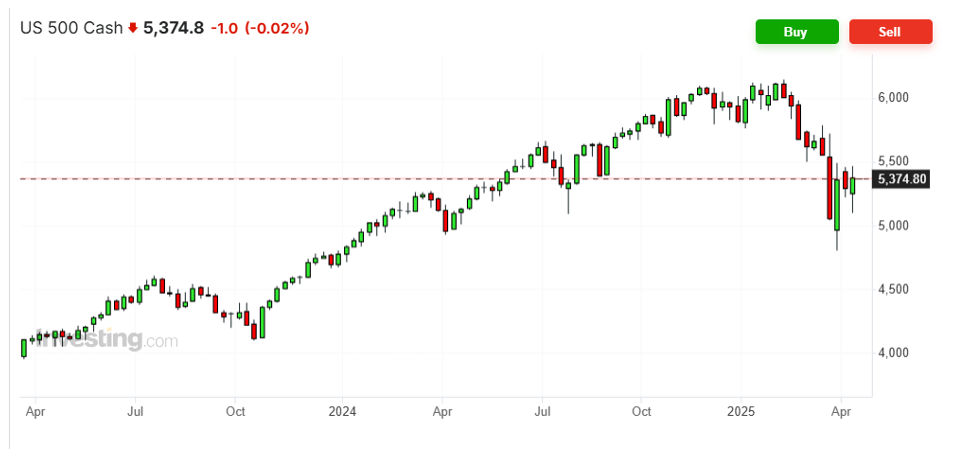
High of 6147 on February 9, 2025, to low 4802 on April 4, 2025, a 21.9% drop. This includes an intraday gain from the lows to the highs on April 9 of 12.7%.
Treasury Markets and Interest Rates
Currency markets initially responded as they often do with a flight to safety, namely the US dollar. This soon reversed as the dollar’s reserve currency status came into question. Firms trading with US partners often need to hold significant amounts of USD. If supply chains return to the United States and outbound trade decreases, this need diminishes greatly. Countries that hold US debt, including China, might balk at buying US Treasuries, which hurts the currency’s strength. This is reflected in the following chart.
Pound versus dollar:
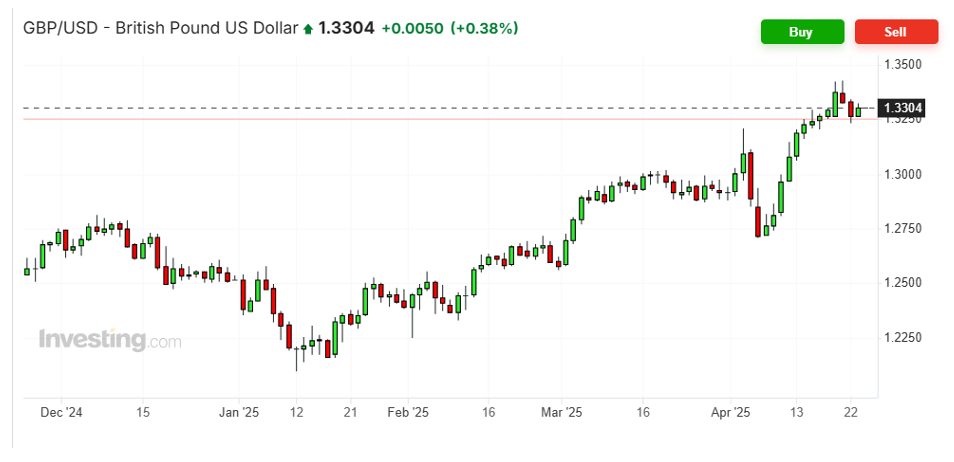
Fell from 1.3209 to 1.2707 from April 2 to April 7, a drop of 3.8%. Rose from 1.2707 to 1.3420 on April 21, a rise of 5.6%.
Much like the US dollar, treasuries act as a safe haven in turbulent times. Thus, the initial move in interest rates was down. Dropping below 4% before spiking. As a property developer himself, Trump understands the benefit of low financing costs. With pressure to make housing more affordable, the move-up is not good for this issue in the near term.
10-Year Bond Yield:
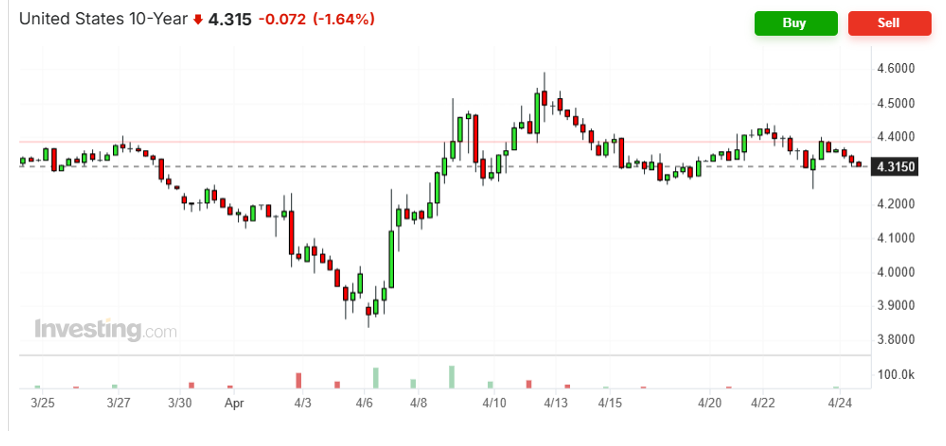
The initial reaction was a drop in yields from 4.403% to 3.8350%, a decline of 12.9%. It then spiked to 4.593%, a change of 19.7%.
Cocoa Market Case Study
Cocoa trends were a bright spot from late 2022 through 2024. We covered many of the fundamental reasons in our 2023 article about the chocolate industry.. In early April, it appeared we might be picking up again, only to have a 21% gain evaporate completely in five days. Fundamentals rarely change this quickly, which is where technical trading can be helpful. Very little can be done when neither explains what is happening.
Cocoa Futures:
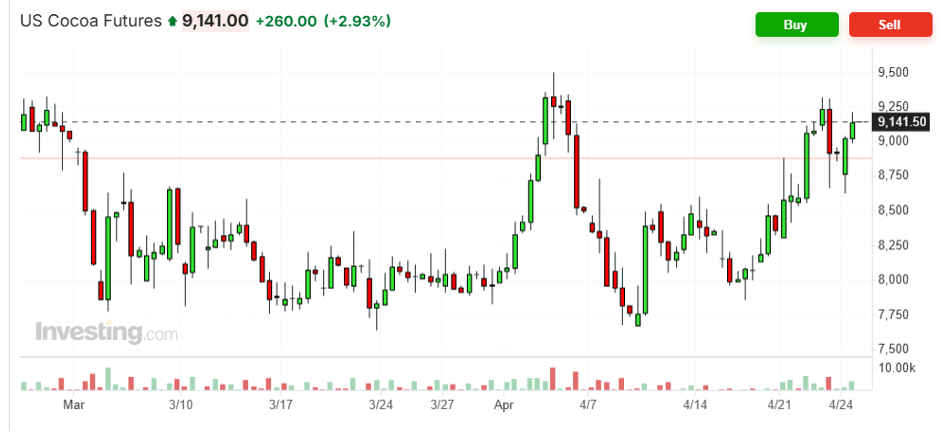
Spiked from 7862.50 on March 31 to 9493 on April 3, a gain of 21.3%. Then dropped to 7678.50 on April 8, a loss of 19.1% in just 5 days.
Opportunities Amid Volatility
Despite the tumult, there is a silver lining. Volatility often precedes directional breakouts. New trade agreements that benefit the United States and its corporations would be very bullish for the US stock market. International stocks might also follow that lead. However, some countries might find themselves on the losing side of those negotiations. Conversely, if partnerships do not materialize, tariffs slow GDP growth, and other countries band together against what they consider unfair play, we could see the long-predicted recession hit the United States. With the US debt at a precarious level and China cornered with its own economic issues, the ensuing chaos could be worse than expected. Trend managers would be fine with either scenario, with a slight edge given to the latter in terms of opportunity. An in-between solution with more whipsawing markets would be unfavorable.
For those already invested, the “sausage making” is part of the process. If one is considering an investment, drawdowns often provide optimal entry points. With a pullback, profitable trades hit their trailing stops, realizing their gain, and weak positions close as well. Thus, new entrants often come in at lower leverage and benefit from new trades. Whatever the direction, Trump is in office for almost four more years. Preparing for volatility might be worthwhile.
Also: See how Little Komodo capitalised on this move.
Illustration generated by ChatGPT using OpenAI DALL·E (2025).

